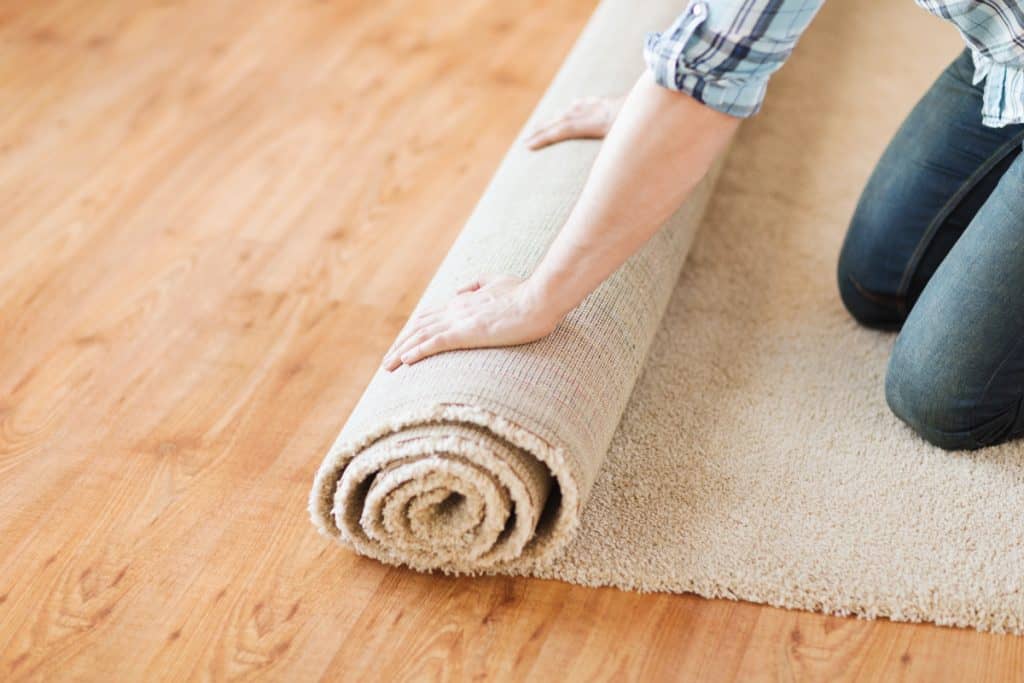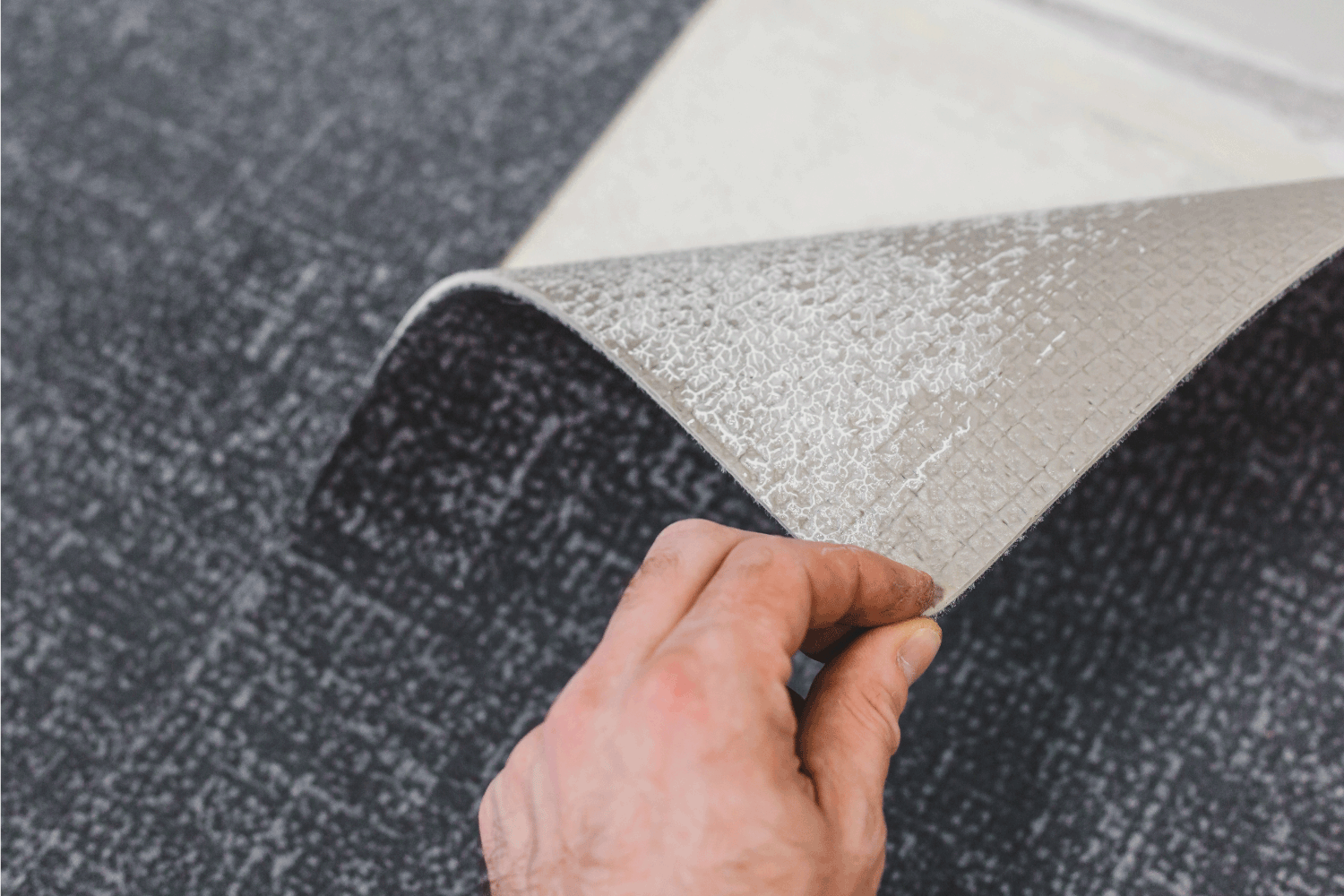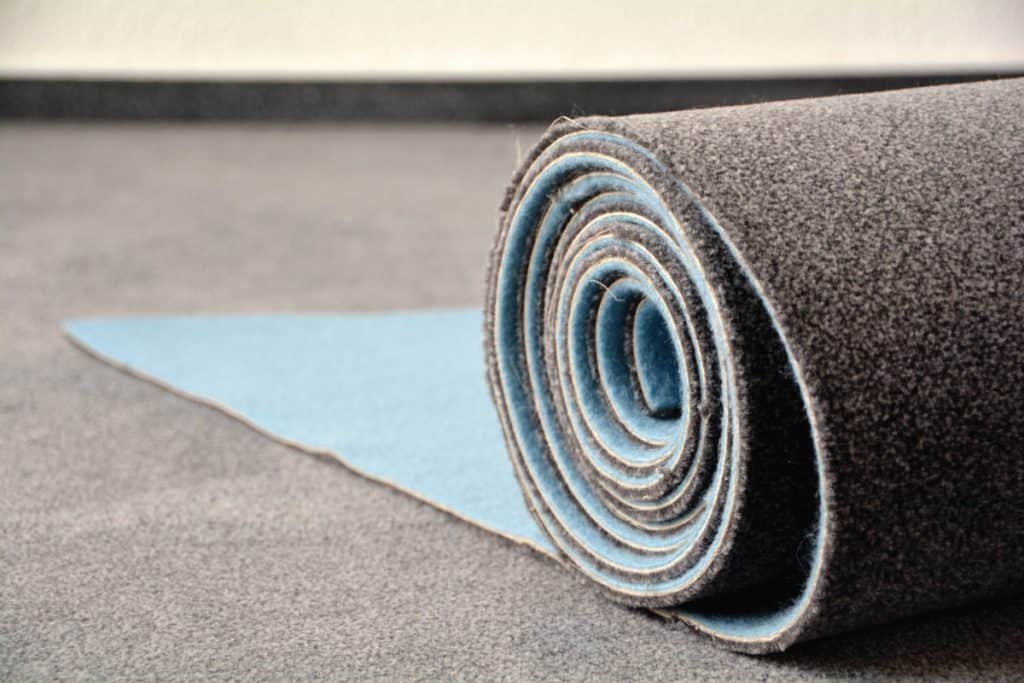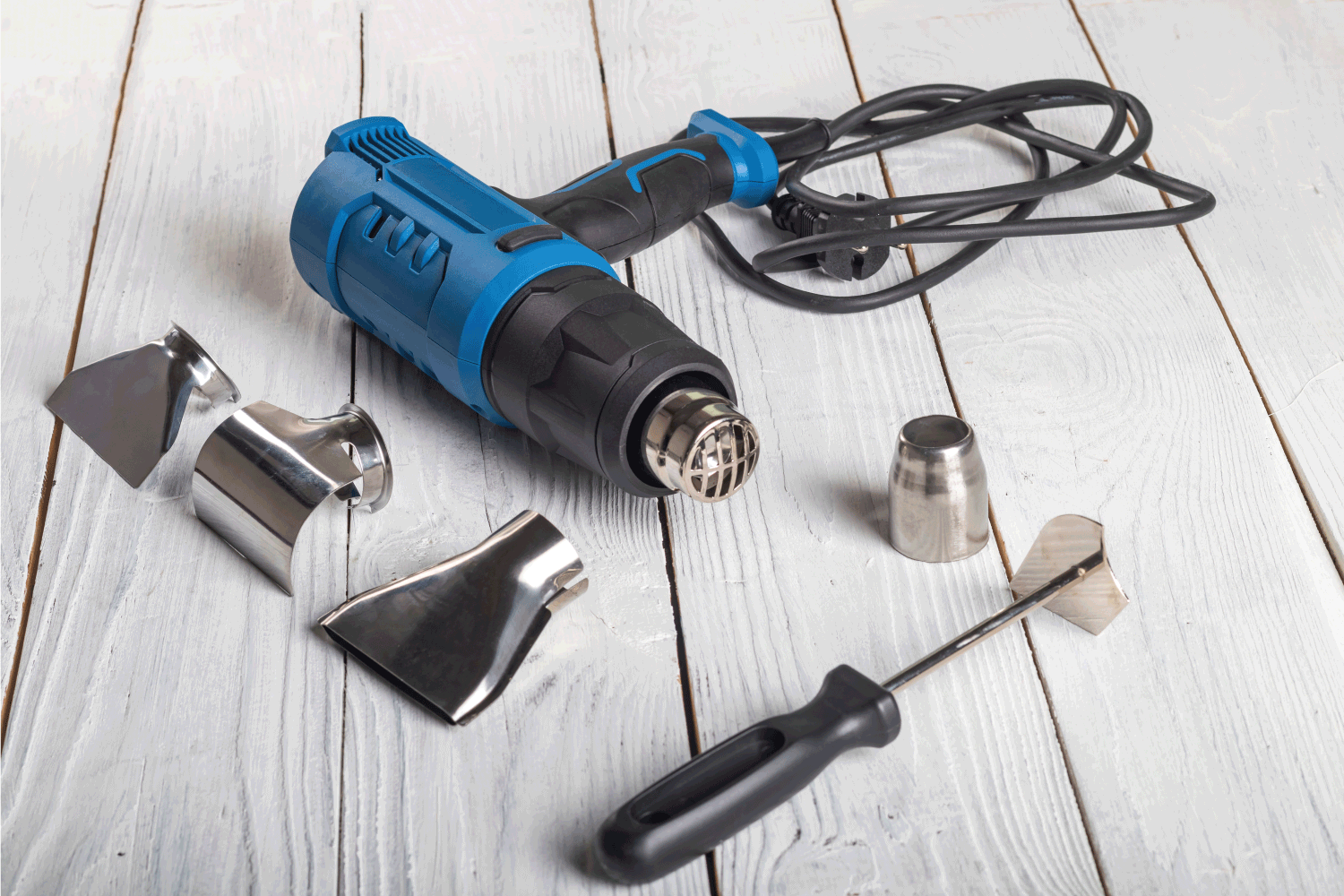Carpet seams can become visible due to several factors. Things such as daily wear and tear, improper installation, and carpet damage can cause the seams to become more visible as the days and months pass. But just how unacceptable are carpet seams? And how do you avoid them? In this post, we're going to answer this for you.
Generally, carpet seams should not be visible. Visible carpet seams can be distracting and take away from other focal points of the room. However, the largest carpet roll available is about 13 feet long, which means that if you have a fairly large room, hiding seams may be more challenging--and therefore more acceptable. It's important to know that while a good installer can minimize visible carpet seams' impact fairly well, it's almost impossible to hide them completely.
Now, we'll discuss the acceptability of carpet seams further and cover the most common types of seams and avoid them.
![A carpenter laying gray carpet on a bedroom, Should Carpet Seams Be Visible? [And what to do to hide them]](https://homedecorbliss.com/wp-content/uploads/2020/11/Male-Worker-Rolling-Carpet-Should-Carpet-Seams-Be-Visible-And-what-to-do-to-hide-them-683x1024.jpg)
Acceptable vs. Unacceptable Carpet Seams
We sometimes add affiliate links and content that was curated and created by our team with the help of advanced ai tools to help showcase the best design styles.

It's important to have realistic expectations about carpet placement, especially if you are carpeting a large room or area or are laying a specific type of carpet for which it is difficult to hide the seams (i.e., low-mills carpets, Berbers, etc.). Depending on the room's size and purpose, a professional carpenter can install the carpet so that the seams are less noticeable.
Acceptable Carpet Seams
In the world of carpeting, some seams are generally accepted. Oftentimes, these seams are actually more noticeable to the homeowner than to guests. Acceptable seams include carpets in which the backing is flush throughout the room. They also won't have any types of overlays or large gaps in their tuft fibers.
Unacceptable Carpet Seams
The most common type of unacceptable carpet seam would be an obvious line separating one sheet of carpet from another (aka "split seams"). Also, seams that are not flush with one another or create huge gaps between carpet pieces aren't generally acceptable. Seams where the carpet has obviously been folded for an extended period of time, and now a crease line appears along the length of the carpet is generally "unacceptable." Lastly, what's referred to as "seam peaking," in which raised portions of the carpet or "peaks" appear due to carpet stretching during the installation process. These usually occur when a carpet is not installed professionally.

Common Reasons for Carpet Seams
Carpet installation can be a tricky process. Here, we'll look at the most common causes of carpet seams and discuss how to avoid them.
Unraveling Seams
When carpets are not installed securely, their seams can quickly begin to unravel at the edges. This is known to happen more often when a sealing iron is used, and it isn't pressed firmly enough against the seam's edge. It can be prevented by going over the edges twice with the iron to ensure that iron melts all of the glue to be seen will not unravel.
Peaking Seams
Seam peaking is probably one of the most common carpet installation issues. It can occur when the carpet is stretched across the seam (or perpendicular to it), resulting in a raised line of carpeted area. To avoid this, be sure that you stretch the carpet parallel to its scene to avoid placing pressure on the carpet in the wrong direction, thus causing peeking.
Another common issue with peak seams is seam "shadows." These occur when light from a window or the ceiling casts a shadow on the seam. The shadows will intensify the visibility of the seam, making it more prevalent. They can be avoided by using softer lighting in the room.
Seams That Split
Carpeting located in high-traffic areas can be prone to splitting at the seams if not installed correctly or without a seam roller. This can be avoided by first installing the carpet where the seams aren't near high-traffic areas (corners work best) and by using a seam roller to apply pressure on the seams, forcing the backing of the carpet to adhere to the adhesive. It can also be helpful to place a piece of plywood beneath the carpet seams before you go over them with the glue. This will help hold them in place, even under duress.
Check out this seam roller on Amazon!
Seam Discoloration
Seam discoloration can occur when the sealing iron used to install the carpet is too hot. To avoid this, it's best to set your ceiling iron at a heat level of no more than 3 or 4. Also, be sure to apply a heat shield and work in the direction of the carpet's nap, not against it. Sometimes seam weights can also cause discoloration. This occurs when the weights are too heavy and make it impossible for heat and moisture to escape (note: this can also cause tuft swelling and pile reversal). It's best not to use weights made from heavy materials such as glass or marble, plastic--thin metal weights are best.
How Do You Blend Carpet Seams?

Carpet seams candy blended by taking a carpet roller, brush, or comb and running it over the seams of the carpet multiple times. When doing this, be sure to run the tool in the same direction as the carpet's nap to avoid tugging the tuft fibers on the carpet. And believe it or not, regular vacuuming can also help to blend the seams of your carpet as it fluffs and plumps the carpet fibers and closes gaps between them as well.
Where Should Carpet Seams Be?
Carpet seams should always be placed in low-traffic areas of a room or space. The closer the seams are to the wall, the better and less noticeable they will be (especially when direct sunlight enters the room). If you are laying carpet in a small room, it's best to have the seams start at the farthest corner away from the door.
Should You Tape Carpet Pad Seams?
Yes. When installing carpeting, padding should be either glued using carpet tape (and a heat gun) or stapled directly on top of the floor. Laying the padding correctly is one of the most important steps in installing a carpet not to develop issues later.

How Do You Use A Heat Gun To Seam Carpet?
You can seam your own carpet within a matter of minutes. If you don't have the tools needed for the job, you can lease them for a day or two from your nearest home improvement store. (note: Be sure to read the instructions carefully before operating the heat gun to avoid injury.)
Tools you'll need:
- Heat gun
- Books or heavy objects
- Carpet seaming tape
- Scissors
- Carpet seam roller
- Protective gloves
Step 1. Lay The Seaming Tape
Once you have the edges of your carpet seams lined up, you can prepare to lay the seaming tape. Cut off a piece of seaming tape that runs the length of the seam. Next, lay the tape beneath the edges of the two separate pieces of carpet (between the seams). Make sure that the carpeting tape is centered between the pieces and not closer to one side than the other. It's best to use one individual piece for this step to help make the seam as tight as possible. Next, use your hands to bring the two seams together so that they're touching tightly but not overlapping one another.
Check out this seaming tape on Amazon!
Step 2. Join The Seams
Hold the two carpet pieces together while pressing them down on the carpet tape, and then turn on your seaming iron and set it to the desired heat level. The seaming iron may take anywhere from 2 to 5 minutes to heat up completely, so you may want to plug it in before preparing the carpeting tape.
Check out this heat gun on Amazon!
Step 3. Apply the Seaming Iron
Slowly and carefully movie seaming iron up the length of the seam. Be sure that you cover the entire width of the carpeting tape and allow the iron to linger (just a second) on each section of the seam. This ensures that the back of the carpeting makes sufficient contact with the adhesive on the carpeting tape. As you slide the iron across the seam, press the carpet pieces that you just went over down gently with your hand continue to pull them together.
It's also helpful to use take your seam roller and roll it over the seams that you just went over with the iron to help make the carpet lay as flat as possible. After you've rolled the iron and roller over the seam, take a large book (or another heavy object) and lay it over the length of the seam, leaving it there until the adhesive on the carpeting tape sets.
Check out this seaming iron on Amazon!
Step 4. Finish The Seam
Continue rolling the seam iron and roller over the length of the seam until you reach its end. Be sure not to remove the weights for at least 15-20 minutes (longer is better). After you've completed sealing the seam, take a second to look at your work and scan the same for any areas that you may have missed or that may be peaking. If you find any, you'll need to go over them again with the seaming iron.
![Carpenter laying gray carpet on a bedroom, Should Carpet Seams Be Visible? [And what to do to hide them]](https://homedecorbliss.com/wp-content/uploads/2020/11/Carpenter-Laying-Carpet-should-carpet-seams-be-visible-and-what-to-do-to-hide-them.jpg)
Wrapping Things Up
Due to the nature of a carpet's fabric, some minor but visible seams are expected. And because of this, some may be more acceptable than others. It's always best to have a professional carpenter install your carpeting to avoid seams and other issues that can arise when carpeting is not installed properly.
Interested in learning more about home flooring? Before you go, be sure to check out our other posts:
What Color Carpet Goes With Gray Walls? [5 Suggestions With Pictures]





I have a question. We had whole house carpet installed last July, Obviously many seams. Each seam has a 3″ wide pattern running the length of the seam. This is plush carpet with H2O backing.. 182 yrds. We are sick about it. these show both with the lights on or off and natural light.. The company so far thinks it’s fine. Any comments
I had same issue from carpet purchased from Home Depot and installed via their sub American Carpet. I had them out to the house to repair seams as they were coming up. Installers were nice but company would not make it right. Have pieces that come up at one seam. All other seams are very visible. Can’t hide them matter how I vacuum, brush carpet.